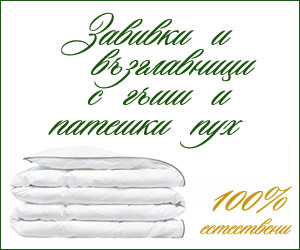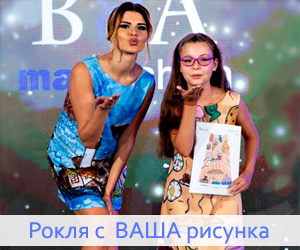GREEN FASHION: SUSTAINABLE PRACTICES THAT CHANGE THE WORLD
Iren Tancheva
Imagine a world where fashion is not just style, but also a beating heart in harmony with nature and ethics. Green fashion introduces us to this new world, where eco-conscious practices become an integral part of our daily style, inspiring a global revolution in the clothing and accessories industry. In a time when sustainability becomes a key priority for our planet, green fashion emerges as a fresh and innovative way to rethink the fashion and accessory industry. This environmentally conscious approach to fashion not only reduces negative impacts on the environment but also inspires changes in consumer behavior and business models.

Green fashion supports the idea of a circular economy, where products are designed and produced with their next use in mind. Many brands are implementing recycling programs that offer the opportunity to return old clothes in exchange for discounts or new products. This recycling cycle helps reduce the need for new raw materials and contributes to more sustainable practices in the fashion industry.

One of the most crucial aspects of green fashion is consumer education. Brands actively share information about their sustainable practices, production processes, and materials to increase consumer awareness. Buyers become more discerning, seeking products that not only look stylish but are produced without harming the environment.
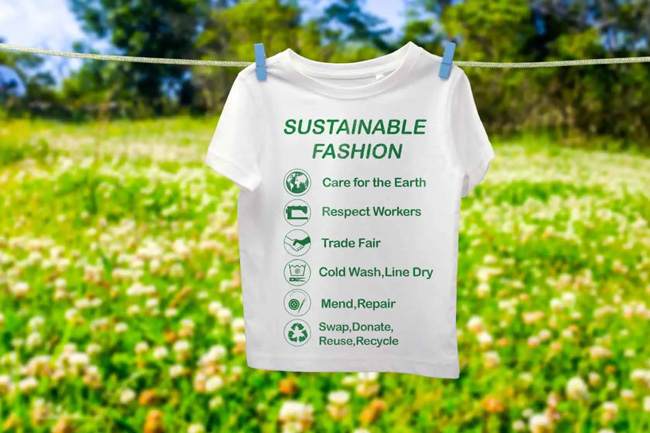
In the world of fashion, where trends change at the speed of light, a few brands stand out as harbingers of change. Names like Stella McCartney, Reformation, and Eileen Fisher combine innovative designs with green materials, challenging stereotypes about what fashion can be. With changes in consumer behavior and the age of information, the trend solidifies its place in the industry. Innovations in sustainable practices, fair labor conditions, and consumer education create a conducive environment for cleaner and more responsible fashion.
With changes in consumer behavior and the age of information, green fashion secures a stable position in the industry. Innovations in sustainable practices, fair labor conditions, and consumer education create a favorable environment for cleaner and more responsible fashion.
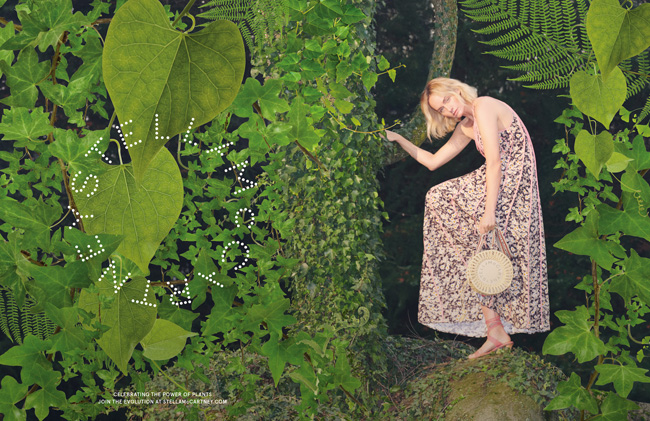

Photos:
1. Poster from the 2011 Runway to Green campaign.
Photo: Tim Walker / https://www.vogue.com/article/style-ethics-fashion-gets-more-eco-friendly-with-runway-to-green
2. Teen Vogue's poster for eco-friendly fashion brands.
Photo: Matteo Montanari / https://www.teenvogue.com/gallery/eco-friendly-fashion-brands-chic
3. A t-shirt that shows the benefits of wearing clothes made from recycled materials.
Photo: https://youthtimemag.com/how-fashion-brands-are-greenwashing-you/
4. Amber Valletta in Stella McCartney's Plant Power campaign.
Photo: Johnny Dufort / https://showstudio.com/news/first-look-stella-mccartneys-ss-20-plant-power-campaign
5. Designer Yael Aflal - creator of the recycled fashion brand Yael Aflal.
Photo: CELESTE SLOMAN / https://www.bbc.com/news/business-50644898
Sources:
https://www.vogue.in/fashion/content/vogues-ultimate-guide-to-sustainable-fashion
https://hbr.org/2022/01/the-myth-of-sustainable-fashion
https://www.theguardian.com/fashion+environment/ethical-living
https://www.nytimes.com/2022/05/07/style/redefining-sustainable-fashion.htmlhttps://www.capital.bg/biznes/pazari/2023/11/18/4524144_budeshteto_na_modata_inovativni_materiali_disruptivni/
Read: 87 times © Fashion Lifestyle Magazine, issue 126, February 2024
The advantages of using recycled polyester in clothing production
Polyester is one of the most widely used synthetic fabrics in the world, but it also has a significant environmental impact. Polyester is made from petroleum, a non-renewable resource that contributes to greenhouse gas emissions and climate change. Polyester also takes a long time to decompose, and can release microplastics into the water and soil when washed or discarded.
Fortunately, there is a more sustainable alternative to virgin polyester: recycled polyester. Recycled polyester, also known as rPET, is made from recycled plastic bottles and other polyester-based products that would otherwise end up in landfills or oceans. By using recycled polyester, clothing producers can reduce their environmental footprint and create high-quality garments that are durable, versatile, and economical.
The Benefits of Recycled Polyester
Recycled polyester has many advantages over virgin polyester, both for the environment and for the consumers. Here are some of the main benefits of using recycled polyester in clothing production:
• Reduced waste and pollution: By using recycled polyester, clothing producers can divert plastic waste from landfills and oceans, and prevent further contamination of the earth and water. According to Understanding Recycled Fabrics Sustainability, it is possible to make one extra-large T-shirt from five recycled bottles. This means less plastic waste and more valuable resources.
Nixita Dress to impress produces print on demand clothes from recycled polyester. The models are created with photos and drawings provided by the clients and are printed and produced only after an order is placed to save resources and prevent the generation of unsold goods and waste.

• Reduced energy and water consumption: Recycled polyester also requires less energy and water to produce than virgin polyester. According to The Truth About Recycled Polyester Fabric Sustainability, for each kilogram of recycled polyester fabric produced, up to 62% less energy and 99% less water are used compared to virgin polyester. This results in lower carbon dioxide emissions and lower water consumption, which are crucial for mitigating climate change and preserving natural resources.
• Comparable quality and performance: Recycled polyester offers almost the same properties as virgin polyester, but with significant environmental gains. Recycled polyester is durable, lightweight, crease-resistant, colorfast, quick-drying, stain-resistant, eco-friendly, and economical. Recycled polyester can also be blended with other natural or synthetic fibers to create different textures and effects. Recycled polyester is suitable for various types of clothing, such as sportswear, outdoor wear, workwear, fashion, and home textiles.
The Challenges of Recycled Polyester
Despite its many benefits, recycled polyester also has some challenges and limitations that need to be addressed. Here are some of the main challenges of using recycled polyester in clothing production:
• Limited supply and demand: Recycled polyester depends on the availability and quality of recycled plastic materials, which can vary depending on the collection and sorting systems in different regions. Recycled polyester also faces competition from other synthetic or natural fibers, which may have lower prices or higher consumer preferences. To increase the supply and demand of recycled polyester, it is important to raise awareness and educate consumers about its environmental and social benefits, and to support policies and initiatives that promote circular economy and waste reduction.

• Potential microplastic release: Recycled polyester, like virgin polyester, may release microplastics into the environment during washing or wearing. Microplastics are tiny pieces of plastic that can harm marine life and ecosystems, and potentially enter the human food chain. To prevent or reduce microplastic release, it is advisable to use filters or bags when washing recycled polyester garments, and to choose fabrics that have higher quality and durability. It is also important to research and develop more biodegradable and compostable alternatives to polyester and other synthetic fibers.
• Complex and costly production process: Recycled polyester production involves a complex and costly process that requires a lot of resources and technology. Recycled polyester production can be divided into two main methods: mechanical and chemical. Mechanical recycling involves melting and extruding plastic materials into new fibers, while chemical recycling involves breaking down plastic materials into their basic components and then re-polymerizing them into new fibers. Mechanical recycling is more common and less expensive, but it may result in lower quality and performance of the fibers. Chemical recycling is more advanced and efficient, but it is more expensive and requires more energy and chemicals. To improve the production process of recycled polyester, it is essential to invest in innovation and collaboration among different stakeholders in the textile industry.
Recycled polyester is a smart choice for clothing production, as it offers many environmental and social benefits, as well as comparable quality and performance to virgin polyester. Recycled polyester can help reduce waste and pollution, conserve energy and water, and create high-value products that meet the needs and expectations of consumers. However, recycled polyester also has some challenges and limitations that need to be overcome, such as limited supply and demand, potential microplastic release, and complex and costly production process. To maximize the potential of recycled polyester, it is necessary to increase awareness and education, support policies and initiatives, and invest in innovation and collaboration. Recycled polyester is not a perfect solution, but it is a positive step towards a more sustainable and circular textile industry.
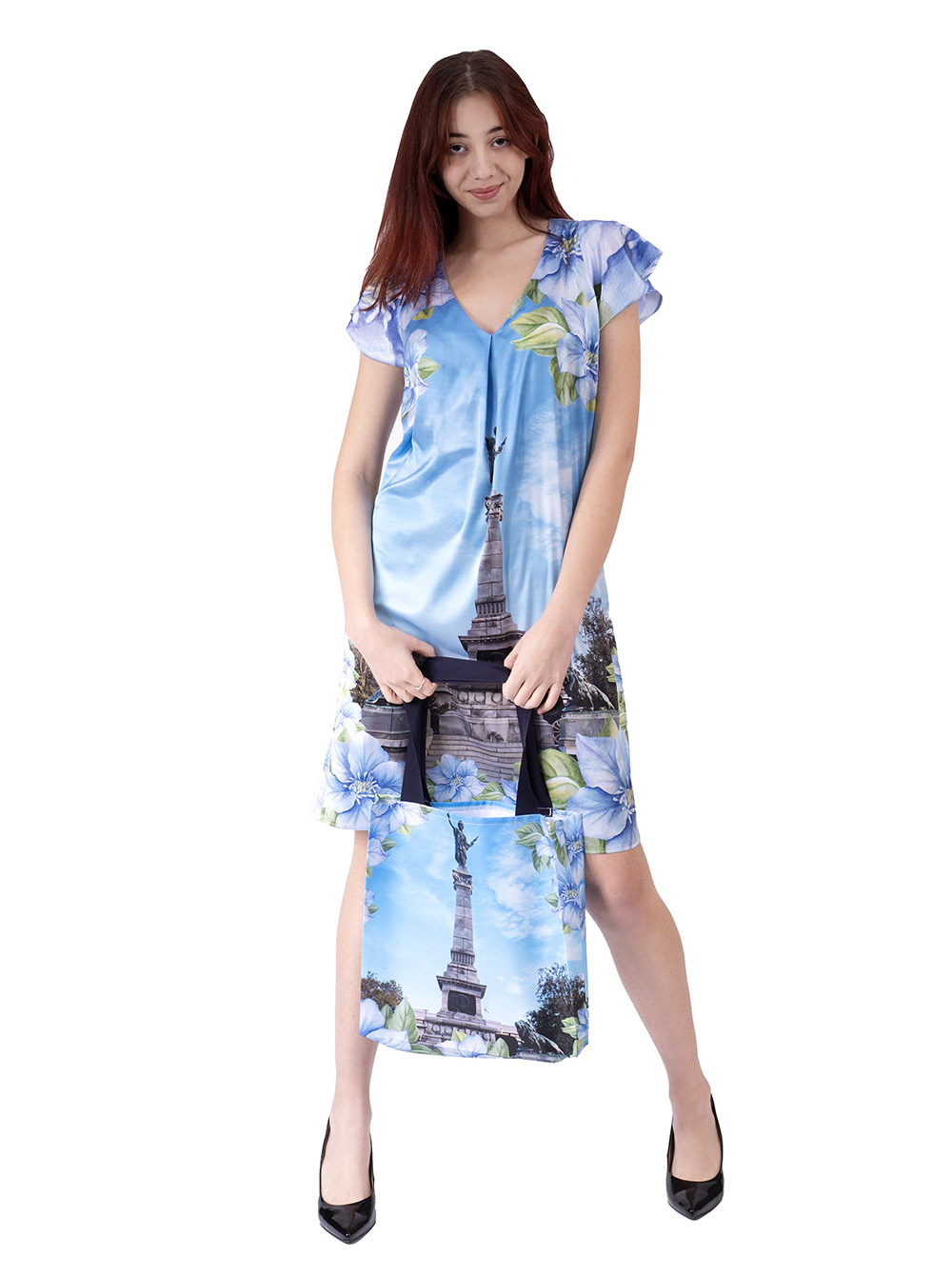
Sources:
Understanding Recycled Fabrics Sustainability - https://thetechfashionista.com/recycled-fabrics/
The Truth About Recycled Polyester Fabric Sustainability - https://www.panaprium.com/blogs/i/recycled-polyester-fabric
Photos:
Models by Nixita Dress to impress - dresses, skirts, tote bags, scarves, crossbody bags
Read: 2329 times © Fashion Lifestyle Magazine, issue 126, January 2024
MORE PUBLICATIONS:ISSUE 123: International denim show Bluezone celebrate 20 years
ISSUE 120: The international fashion trade fair TextailorExpo 2022
ISSUE 115: THE MINOAR REPRESENT PROJECT
ISSUE 114: PHASIS: MINOÁR'S LATEST MISSIVE
ISSUE 109: How textile clusters can strengthen the European economy





